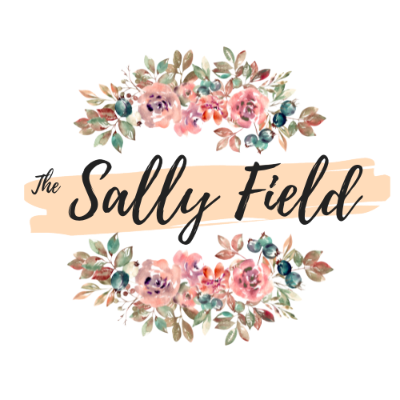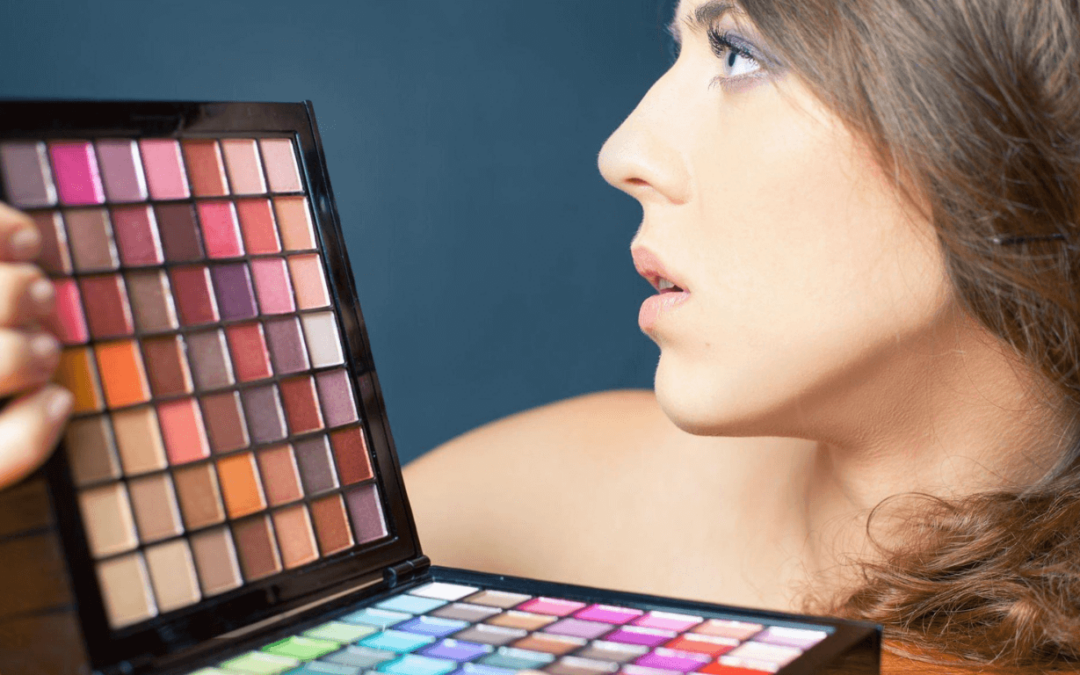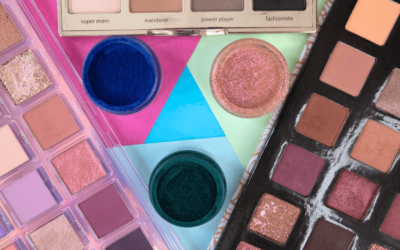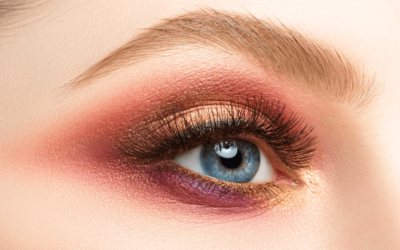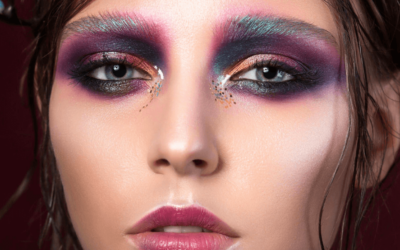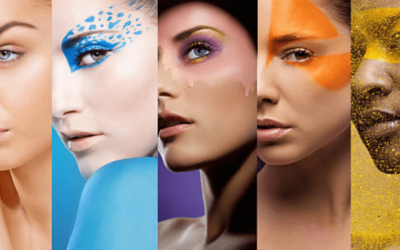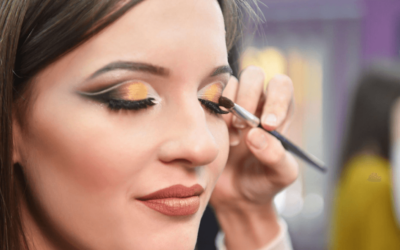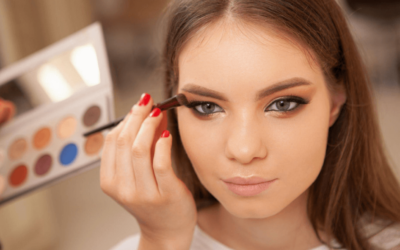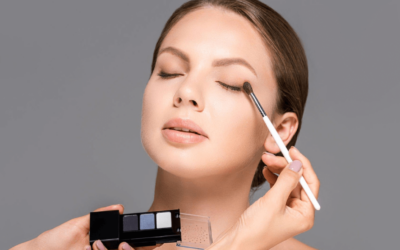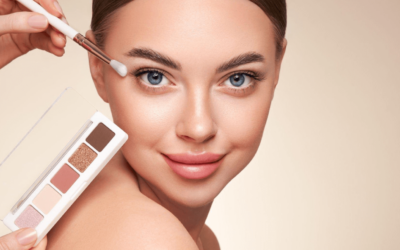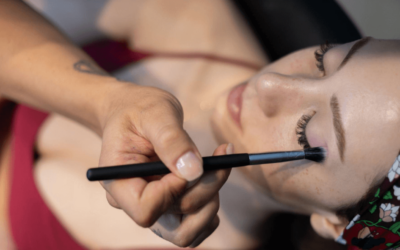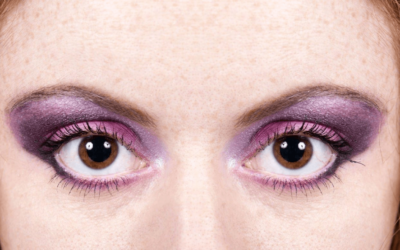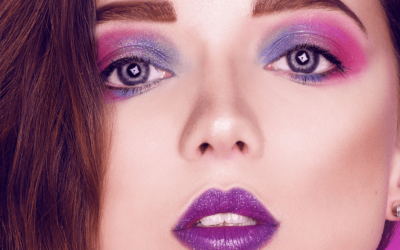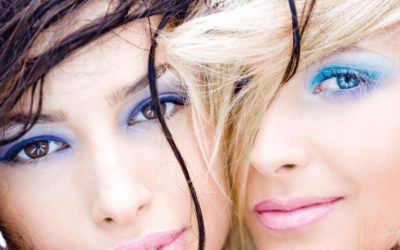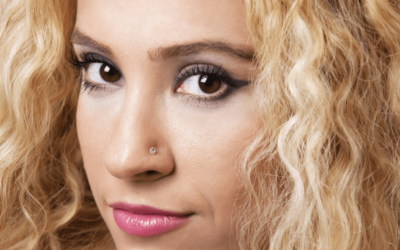In the captivating realm of makeup, the eyeshadow color wheel stands as a guiding beacon for creating mesmerizing eye looks that pop with vibrancy and allure.
Just like a painter’s palette, understanding the interplay of colors on the wheel can elevate your eye makeup game to artistic heights.
On a colorful journey as we dive deep into the nuances of the eyeshadow color wheel, unveiling its secrets, harmonious combinations, application techniques, and more.
The Eyeshadow Color Wheel: Your Creative Compass
Imagine the eyeshadow color wheel as a treasure trove of hues waiting to be discovered. This ingenious tool is a creative compass that assists makeup enthusiasts and professionals alike in harmonizing colors to craft captivating eye looks.
The color wheel showcases primary, secondary, and tertiary colors, providing a roadmap for pairing and blending eyeshadows to create depth, contrast, and visual impact.
Primary Colors: The Foundation of the Wheel
At the heart of the eyeshadow color wheel lie the primary colors: red, blue, and yellow. These vibrant hues are the building blocks for all other shades.
By mixing primary colors, you can create an array of secondary and tertiary colors, allowing for a limitless range of eyeshadow possibilities.
Understanding the power of primary colors enables you to craft captivating eye looks that are both visually striking and harmonious.
Secondary Colors: Blending Brilliance
When primary colors join forces, they give birth to the enchanting secondary colors: orange, green, and purple. These hues sit between the primary colors on the color wheel and bring a sense of blending brilliance to your eye makeup.
Secondary colors open doors to striking and complementary combinations that can make your eyes pop with allure. The key to mastering the color wheel is embracing the synergy between these secondary shades.
Tertiary Colors: Depth and Dimension
Delving deeper into the realm of the color wheel, we encounter the tertiary colors, which arise from mixing primary and secondary colors.
These nuanced shades add depth and dimension to your eye looks, allowing for intricate color gradations and transitions.
By strategically incorporating tertiary colors, you can create eye-catching effects that draw attention to your eyes and showcase your artistry.
Complementary Color Harmony: Bold and Striking
One of the most captivating aspects of the eyeshadow color wheel is the concept of complementary color harmony.
Complementary colors are located opposite each other on the wheel, such as red and green, blue and orange, or yellow and purple. Pairing complementary colors in your eye makeup creates a bold and striking contrast that grabs attention.
Experimenting with these combinations can lead to breathtaking results that highlight your eyes in a dramatic yet balanced manner.
Analogous Color Harmony: Subtle Elegance
For those who prefer a more harmonious and subtle approach, the analogous color harmony comes to the rescue. Analogous colors are neighbors on the color wheel, sharing similar undertones.
For instance, yellow, yellow-orange, and orange form an analogous trio. Utilizing analogous shades in your eyeshadow application creates a seamless and elegant gradient that’s pleasing to the eye.
This technique is perfect for achieving soft and sophisticated eye looks suitable for various occasions.
Split-Complementary Color Harmony: Dynamic Balance
For a twist on the complementary color harmony, consider exploring the split-complementary color scheme. This approach involves selecting one base color and then incorporating the two adjacent colors to its complementary counterpart.
This technique offers a dynamic balance between boldness and harmony. It allows you to maintain a visually striking contrast while introducing a touch of complexity and depth to your eye makeup.
Triadic Color Harmony: Playful Symmetry
The triadic color harmony is a harmonious blend of three equidistant colors on the color wheel. This approach creates a balanced yet playful composition that captures attention without overwhelming the eyes.
For instance, using blue, red, and yellow in your eyeshadow application forms a triadic harmony that exudes vibrancy and symmetry.
Triadic color schemes are ideal for those who want to infuse their eye looks with energy and a touch of whimsy.
Monochromatic Color Harmony: Elegant Simplicity
Simplicity can often speak volumes, and the monochromatic color harmony is a testament to that. This approach involves working with varying shades and tones of a single color.
By using light, medium, and dark variations of the same hue, you can achieve an elegant and sophisticated eye look that’s both captivating and cohesive.
Monochromatic color schemes are perfect for those who prefer a more subdued yet impactful makeup style.
Application Tips: Bringing the Wheel to Life
Mastering the eyeshadow color wheel involves not only understanding color theory but also applying it effectively. Begin by selecting a color scheme that resonates with your desired look and mood.
Start with a base color on your lids and gradually incorporate the chosen complementary, analogous, or other harmonious shades to create dimension.
Blend meticulously to avoid harsh lines, and remember that practice makes perfect. Experimentation is key, and with time, you’ll develop an instinct for combining colors that dazzle.
Exploring Color Psychology: Emotions in Hues
Delving into the world of the eyeshadow color wheel goes beyond aesthetics; it also touches on the realm of color psychology. Different colors evoke distinct emotions and feelings.
For instance, warm colors like red and orange can exude passion and energy, while cool colors like blue and green convey calmness and tranquility.
Understanding the emotional impact of colors can help you tailor your eyeshadow choices to the mood and statement you wish to convey.
Eyeshadow Color Wheel Tools: Online Resources
In the digital age, access to eyeshadow color wheel tools has never been easier. Online resources offer interactive color wheels that allow you to experiment with different color combinations virtually.
These tools enable you to visualize how colors interact and assist you in making informed decisions when creating eye looks.
Whether you’re a makeup enthusiast or a professional artist, these resources can serve as valuable companions on your color journey.
Your Palette of Creativity
As we conclude our voyage through the enchanting world of the eyeshadow color wheel, remember that the power to create captivating eye looks is at your fingertips.
The color wheel is not merely a tool; it’s a palette of creativity waiting to be explored.
By embracing color theory, harmonious combinations, and application techniques, you can unlock the full potential of your eye makeup and turn your lids into canvases of artistry.
Start your journey by exploring eyeshadow color wheels, and let your imagination run wild. With every swipe and blend, you’ll weave a story of beauty that reflects your unique style and personality.
The eyeshadow color wheel is your guide to eye looks that mesmerize, so dive in and create magic with colors.
